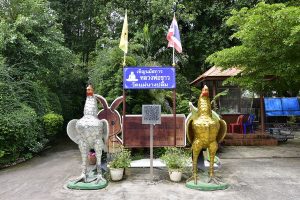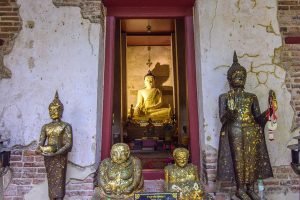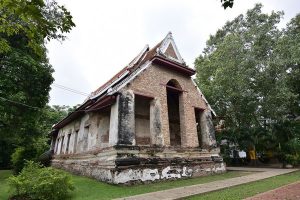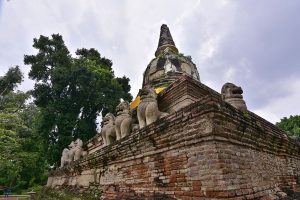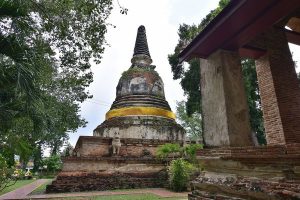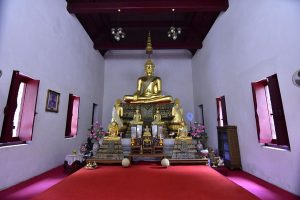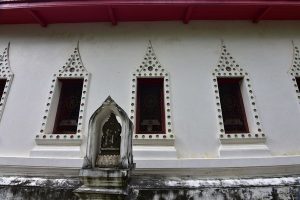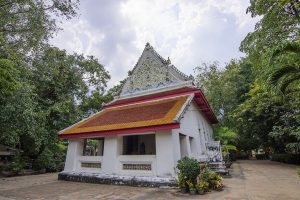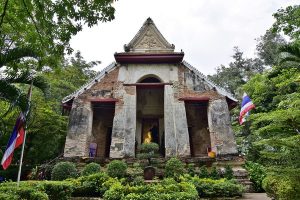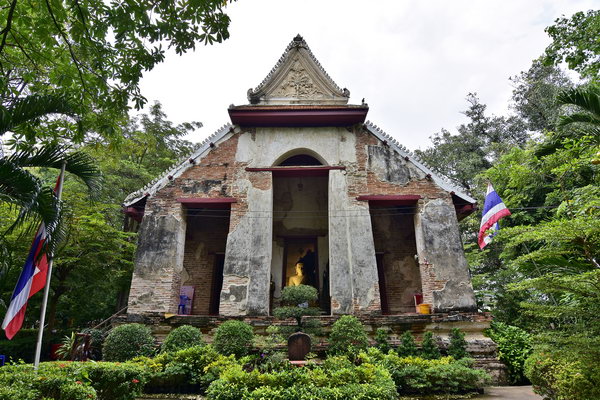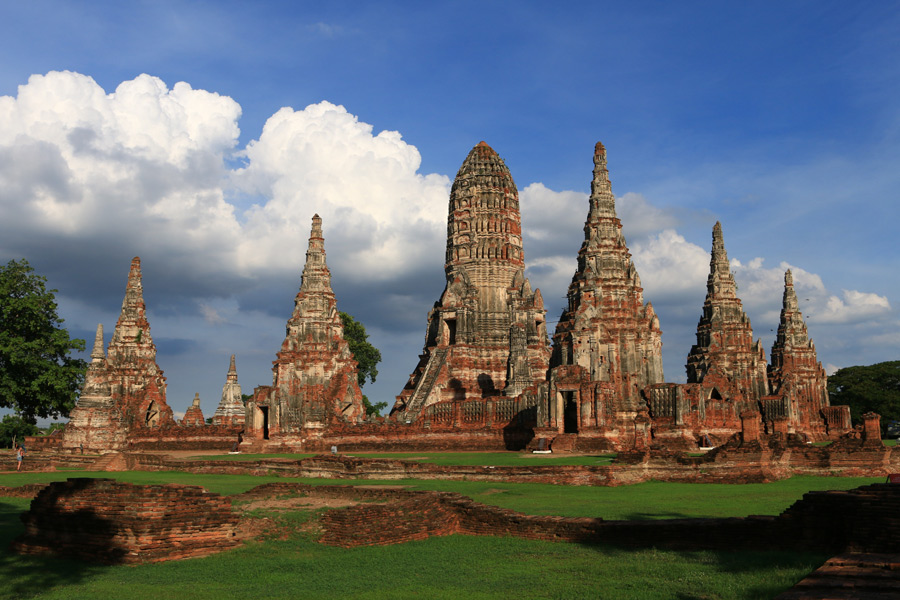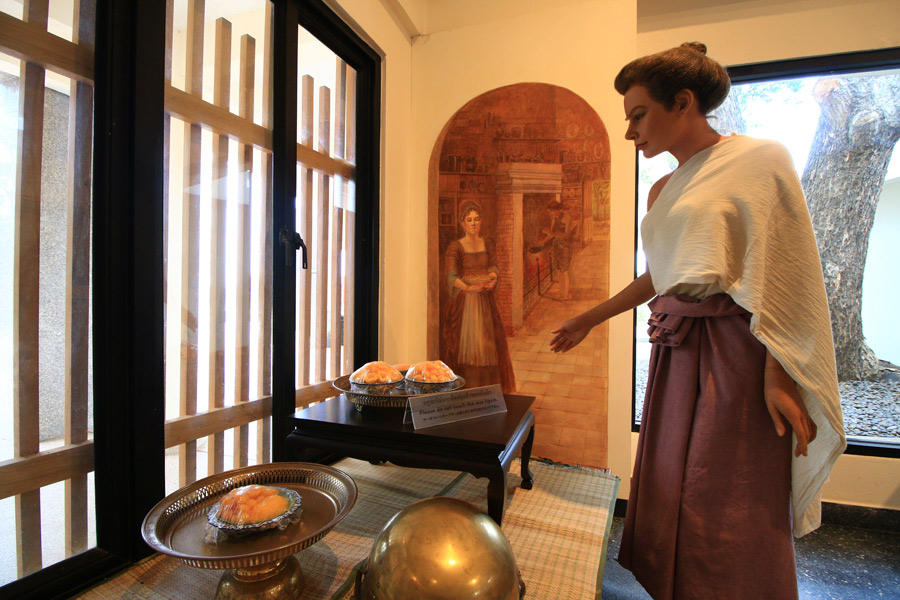
อยุธยาซิตี้พาร์ค
July 2, 2021
Tofu café
July 3, 2021Mae Nang Pluem Temple was originally called ‘Nang Pluem’ Temple or ‘Som Pluem’ Temple. It is believed to be built in B.E. 1920 (A.D. 1377). The spot on which the temple is located had been the area that a Burmese troop settled a camp when they came to cordon Ayutthaya City. The hill on which the Burmese troop set a camp one still appears and is called ‘Khok Phama (Myanmar Hill)’. The art style of the principal pagoda of the temple leads to the assumption that this temple might have been built in the same era as Thammikarat Temple and Maheyong Temple because it is a bell-shaped pagoda in Ceylonese style on the base surround by mythical lion statues. In addition, the gable of the pantheon is also decorated with cement works.
Inside the temple, there is the principal pagoda built on a high base the lower base is surrounded by mythical lion statues. The base is in the style of a lotus and is decorated with a lotus and melon motif which is a Khmer-Lopburi art style. The difference is that the lotus base is pretty high; thus, the free space is wide whilst typical lotus and melon motifs leave only small free space and consist of two motifs, which evolved from the style of Early Ayutthaya Era. This pagoda is hypothesized to be built in 21st Buddhist century (around A.D. 1650). As for the pantheon, there is evidence showing that it was restored in Early Ratanakosin Era. The cement motifs at the gable were influenced by Chinese art which was popular in the reign of King Rama III. This pantheon also has a gable carved with wood by Ratanakosin craftsman at the back, which is now kept at Chao Sam Phraya National Museum. In the temple, there is Luang Pho Khao Buddha Image or Phra Phutthanimit Mongkhonsrirattrai Buddha Image which is a sacred one that people always com to pay homage for auspiciousness and lucks. Those coming to make wishes will always be granted what they wish for and they will com back with boiled eggs and flower garlands for the Buddha image. The pagoda, the pantheon and Luang Pho Khao Buddha Image have been restored in A.D. 2000 by Department of Fine Arts; thus, they look prominent. There is also the statue of Chao Khun Sunthon Thammakoson (Chao Khun Ket), a former abbot of this temple.
Traveling Tip: Khlong Sa Bua Sub-district, Phra Nakhon Si Ayutthaya District, Ayutthaya Province.
